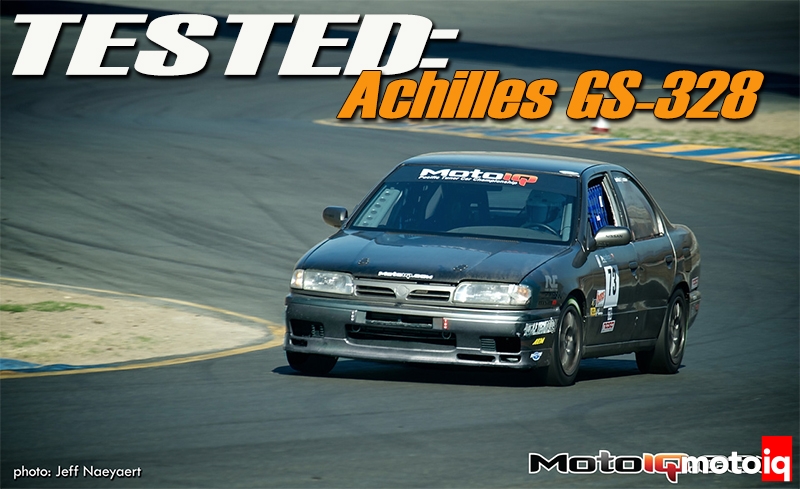,
Obviously, the first thing you'll notice when looking at the GS-328 is that it's a pure slick. No circumferential ribs, tread pattern, nothing. Unfortunately, this makes it so the tire cannot attain DOT legal status (and thus, be allowed to run in certain classes, including MPTCC for now), but it does allow for uncompromised design. The tire also features the R-compound-standard holes to determine remaining rubber depth, especially important considering there is no tread to go by.
 |
| The first thing that stands out, obviously, is that these tires are slicks. Little details show up later. The extremely square corners generally means these tires will be a little more sensitive to camber and will break away more suddenly. However, the Kevlar reinforced square corners will widen the tire's friction circle for more ultimate grip. |
Looking inside, the tire features omnidirectional reinforcement, allowing for diagonal rotation and the sidewalls have some pretty serious starch to them. The section width is an accurate measure with the tread width standing at 7.5″ (190.50mm) and overall diameter is a short-ish (for our G20) 22.5″ tall at full depth. The shorter tire will offset the longer gearing of our P11 transmission, allowing us to use 3rd gear sooner, but ending up in 5th gear more often. The smaller rolling surface area as a result of the shorter and narrower tire will definitely test these tires' ability to hold up to abuse.
 |
| Overall, the GS-328 is a solidly constructed tire. It did have a lot more rubber nipples leftover from the molding process than most tires we've run. |
Before we got started flogging our new slicks, we made sure to carefully scrub the tires in to remove any mold release and bring them up to temperature. Amendment: we made sure to carefully scrub the tires in after we spun quite thoroughly on Infineon's turn 4. Apparently, Achilles' fairly unique construction requires a fair amount of mold release, and our tires proved to not only be slippery when cold, but especially slippery when new. Unfortunately, through no fault of the tires, this soured our initial feelings and we spent a lot of time making sure to slowly reach these tires' limits. Do yourself a favor and make sure to take it extra easy the first couple of laps on these tires.
 |
| Be extremely careful scrubbing them in the first couple of laps. We managed to spin them during the first hard braking corner at Infineon. Fortunately, things got really predictable once they were cycled in properly. |
Fortunately, once that initial awkwardness on scrub in went away, the GS-328 proved to be a pretty formidable tire. Limits were pretty easy to explore, and the tire was fairly communicative of impending loss of grip. Since it is a pure slick tire with no tread squirm, there was none of the accompanying howling that goes on with some tires at the limit, so the driver must recognize the difference in feel at the steering wheel.
 |
| Keep in mind that slicks don't give quite as many hints about impending limits of adhesion. While we had no problem pushing these to their limits and beyond, it did require some adjustment to get used to the complete lack of tread squirm and noise that accompanies a tire that's about to let go on you. |




